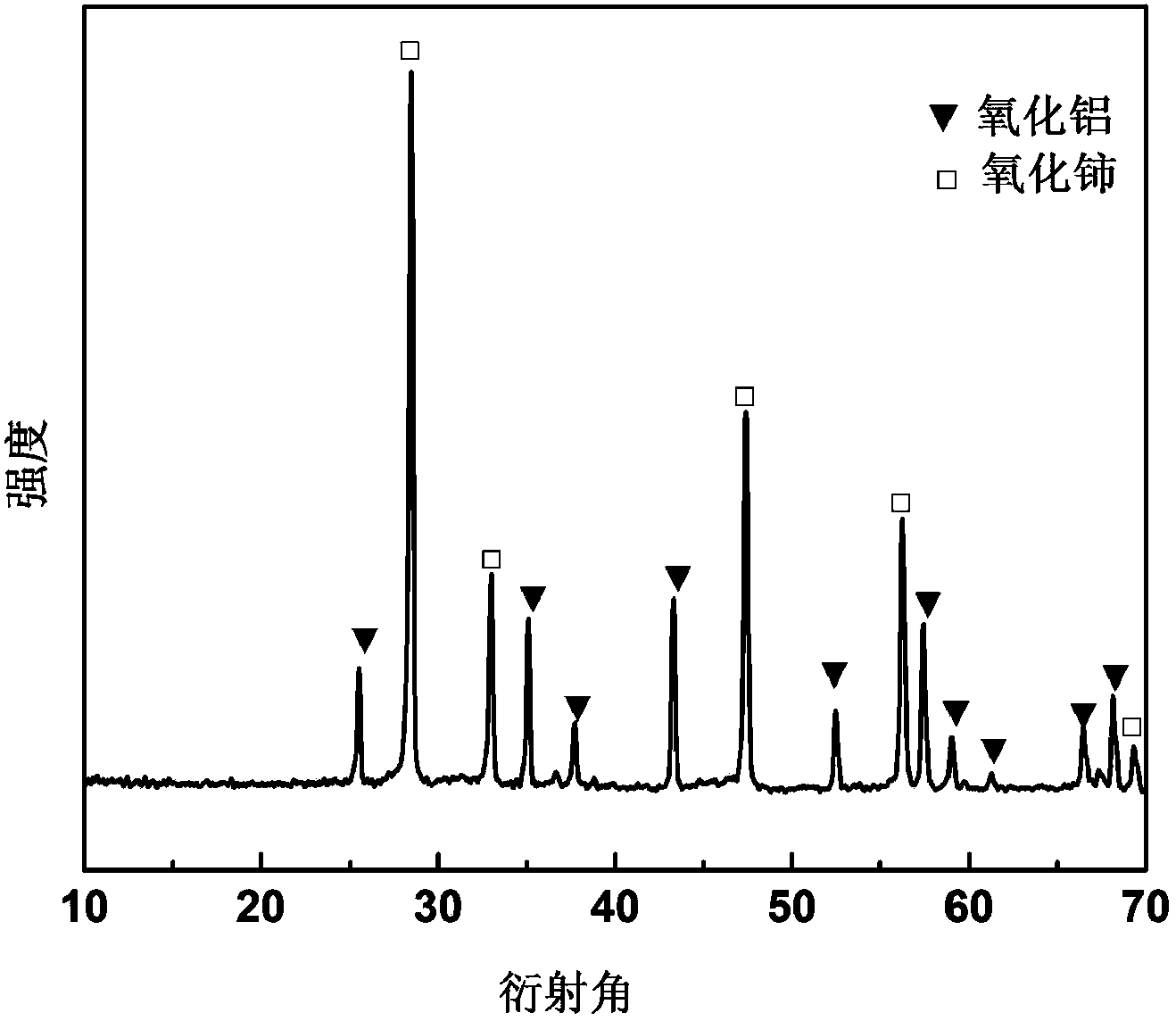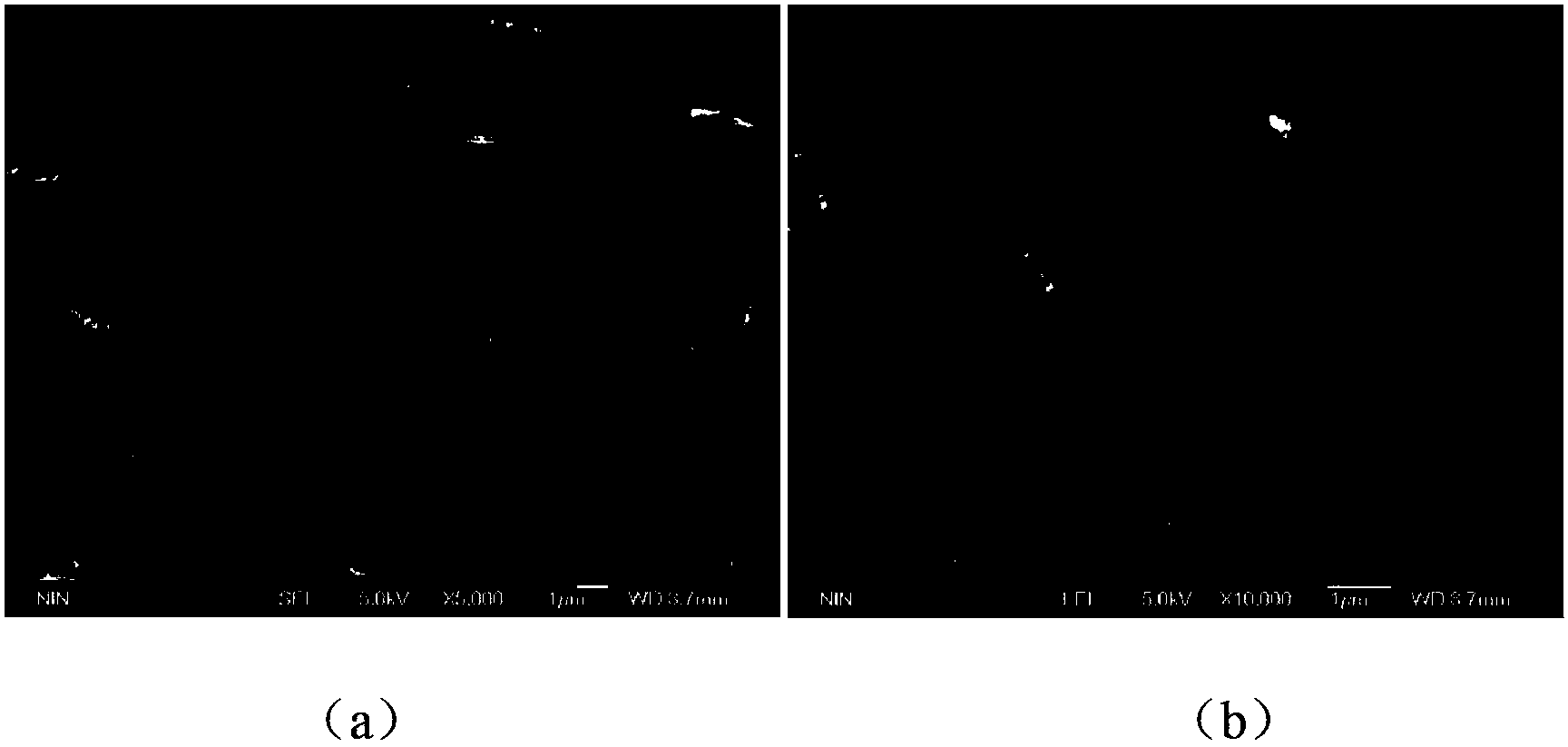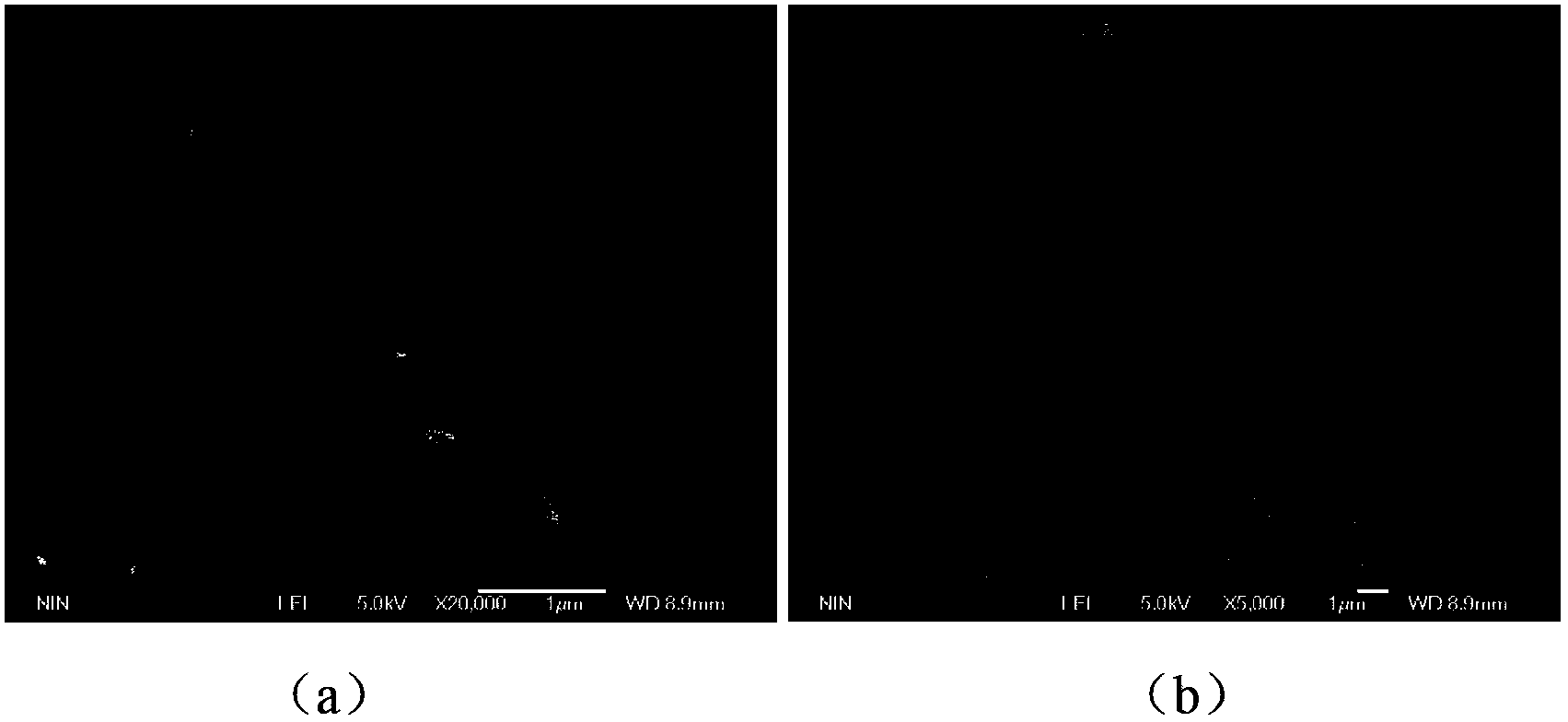Cerium oxide/ aluminium oxide micro-nanostructure ceramic pigment and preparation method thereof
A technology of micro-nano structure and ceramic pigments, applied in the direction of fibrous fillers, etc., can solve the problems of large product particle size and difficult shape control
- Summary
- Abstract
- Description
- Claims
- Application Information
AI Technical Summary
Problems solved by technology
Method used
Image
Examples
Embodiment 1
[0030] Prepare 35 mL of 0.03 mol / L cerium chloride solution, stir and mix thoroughly, add 7.5 g of aluminum nitrate nonahydrate, completely dissolve, the molar ratio of cerium salt and aluminum salt is 1:20, dissolve 8 g of polyethylene glycol 20000 A transparent solution is formed in the mixed solution, and then 20 g of urea is added into the solution and stirred until dissolved. The mixed solution was transferred to a reaction kettle with a polytetrafluoroethylene liner and sealed. Put the reactor into an oven at a constant temperature of 120°C and keep it warm for 22 hours, then take out the reactor and let it cool down to room temperature naturally. The white product in the hydrothermal kettle was collected and washed several times with deionized water and absolute ethanol, and then dried in a vacuum oven at 60° C. for 24 hours to obtain a white powder. The above white powder was placed in a muffle furnace, calcined at 1200° C. and kept for 2 hours, and then naturally coo...
Embodiment 2
[0032] Prepare 35 mL of 0.09 mol / L cerium chloride solution, stir and mix thoroughly, add 7.5 g of aluminum nitrate nonahydrate, completely dissolve, the molar ratio of cerium salt and aluminum salt is 3:20, dissolve 6 g of polyethylene glycol 20000 A transparent solution was formed in the mixed solution, and then 19.2 g of urea was added into the solution and stirred until dissolved. The mixed solution was transferred to a reaction kettle with a polytetrafluoroethylene liner and sealed. Put the reactor into an oven at a constant temperature of 120°C and keep it warm for 26 hours, then take out the reactor and let it cool down to room temperature naturally. The white product in the hydrothermal kettle was collected and washed several times with deionized water and absolute ethanol, and then dried in a vacuum oven at 60° C. for 24 hours to obtain a white powder. The above white powder was placed in a muffle furnace, calcined at 1200° C. and kept for 2 hours, and then naturally...
Embodiment 3
[0034]Prepare 35 mL of 0.06 mol / L cerium chloride solution, stir and mix thoroughly, add 7.5 g of aluminum nitrate nonahydrate, completely dissolve, the molar ratio of cerium salt and aluminum salt is 1:10, dissolve 12 g of polyethylene glycol 20000 A transparent solution was formed in the mixed solution, and then 20.4 g of urea was added into the solution and stirred until dissolved. The mixed solution was transferred to a reaction kettle with a polytetrafluoroethylene liner and sealed. Put the reactor into an oven at a constant temperature of 120°C and keep it warm for 24 hours, then take out the reactor and let it cool down to room temperature naturally. The white product in the hydrothermal kettle was collected and washed several times with deionized water and absolute ethanol, and then dried in a vacuum oven at 60° C. for 24 hours to obtain a white powder. The above white powder was placed in a muffle furnace, calcined at 1200° C. and kept for 2 hours, and then naturally...
PUM
| Property | Measurement | Unit |
|---|---|---|
| length | aaaaa | aaaaa |
| length | aaaaa | aaaaa |
Abstract
Description
Claims
Application Information
 Login to View More
Login to View More - R&D
- Intellectual Property
- Life Sciences
- Materials
- Tech Scout
- Unparalleled Data Quality
- Higher Quality Content
- 60% Fewer Hallucinations
Browse by: Latest US Patents, China's latest patents, Technical Efficacy Thesaurus, Application Domain, Technology Topic, Popular Technical Reports.
© 2025 PatSnap. All rights reserved.Legal|Privacy policy|Modern Slavery Act Transparency Statement|Sitemap|About US| Contact US: help@patsnap.com



